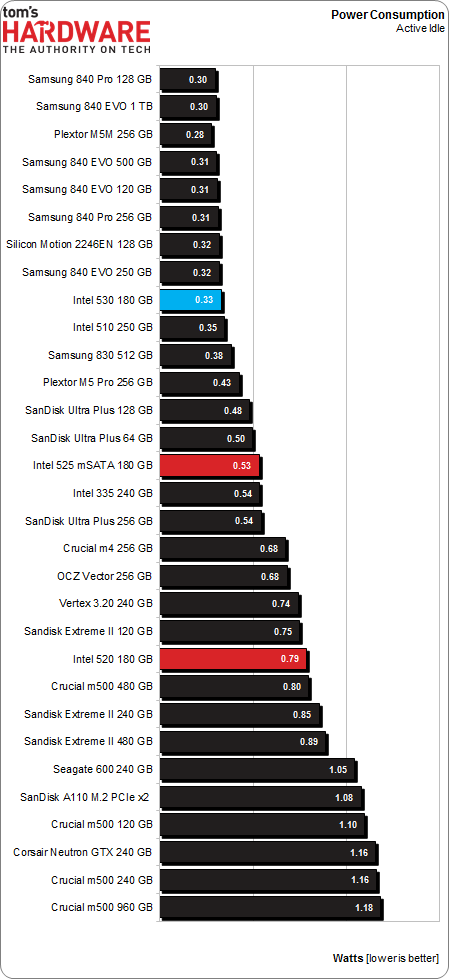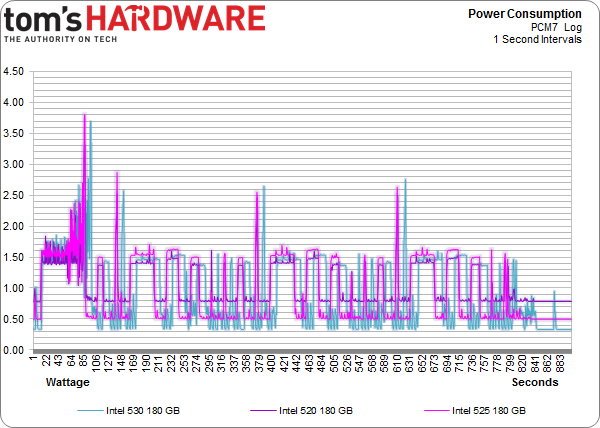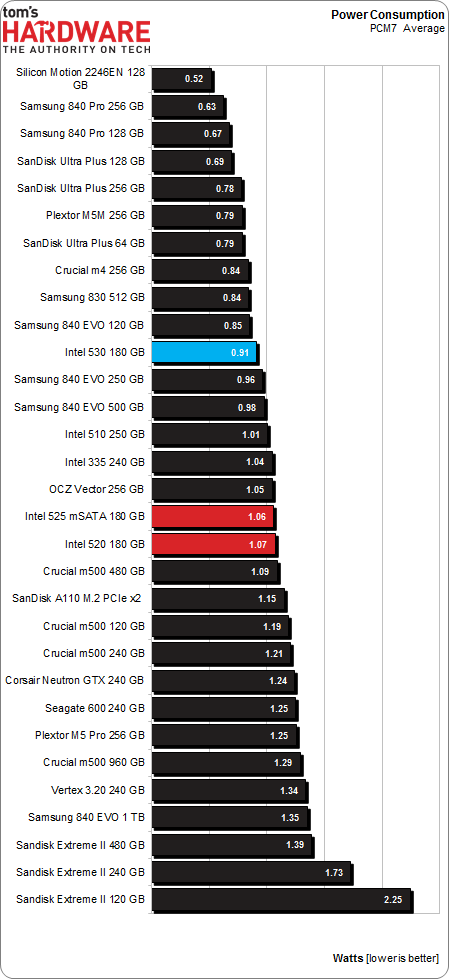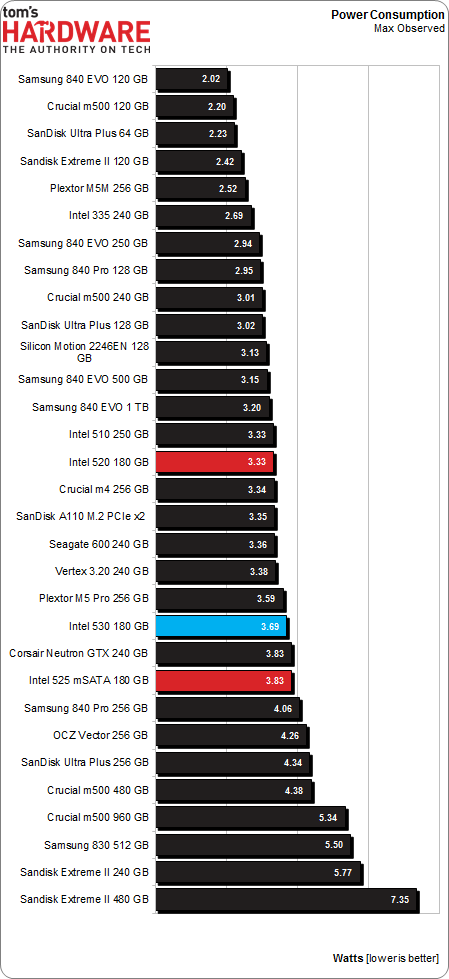Intel SSD 530 Review: A Revised Controller And 20 nm Flash
Intel recently lifted the veil on a replacement for its SSD 520, not surprisingly called the SSD 530. It partners new SandForce silicon with IMFT's 20 nm flash for better power consumption and a more modest price tag. Does the evolution pay off?
Results: Power Consumption
Idle Power Consumption
Idle consumption is the most important power metric for consumer and client SSDs. After all, solid-state drives complete host commands quickly, and then drop back down to idle. Aside from the occasional background garbage collection, a modern SSD spends most of its life doing very little. Enterprise-oriented drives are more frequently used at full tilt, making their idle power numbers far less relevant. But this just isn't the case on the desktop, where the demands of client and consumer computing leave most SSDs sitting on their hands for long stretches of time.
Active idle power numbers are critical, especially when it comes to their impact on mobile platforms. Idle means different things on different systems, though. Pretty much every drive we're testing is capable of one or more low-power states, up to and including DevSleep. That last feature is a part of the SATA 3.2 host specification. And while it requires a capable SSD and a compatible platform, enabling it takes power consumption down to a very small number. This is why we test active idle; it's easy to identify, and is still where SSDs spend most of their time.
One of the SSD 530's greatest selling points is lower power consumption at idle, which could have major implications on Haswell-based mobile platforms. SandForce's B02 controller is DevSleep-capable, so if we use a compatible system, it's possible to see deep sleep power consumption well under 1 mW.
Active idle isn't quite the same. Nevertheless, Intel's newer drive with its updated processor fares much better in this metric. The SSD 525 falls in between the miserly SSD 530 and more power-hungry 520.
PCMark 7 Average Power Consumption
If we log power consumption through a workload, even a relatively heavy one, we see that average use is still pretty close to the idle numbers. Max power may spike fiercely, but the usage seen during a PCMark 7 run is pretty light. You can see the drives fall back down to the idle "floor" between peaks of varying intensity.
Intel's three drives are the same size, feature comparable performance, and are close when it comes to power efficiency under load. That makes spotting differences at idle particularly easy. While the SSD 530, 525, and 520 trade blows at the high end, when it comes to logging PCMark 7, the newest model is clearly able to post the best power figures.
Get Tom's Hardware's best news and in-depth reviews, straight to your inbox.
As a result, when we chart out averages, the SSD 530 looks most attractive. The SSD 520 and 525 are on roughly equal footing several spots down the hierarchy.
Maximum Observed Power Consumption
It's even better news for Intel that maximum power consumption isn't a critical specification for most desktop workloads. In the enterprise space, yes. This information goes into the calculation for total cost of ownership. But in a client environment, you shouldn't be seeing these numbers for more than short bursts.
When we measure observed consumption, the 20 nm-based SSD 530 splits the SSD 520 and 525, which employ 25 nm NAND.
Current page: Results: Power Consumption
Prev Page Results: File Copy Performance With Robocopy Next Page SSD 530 Offers Sassy Looks, Solid Performance, And So-So Pricing


